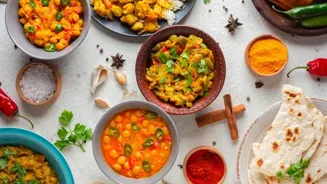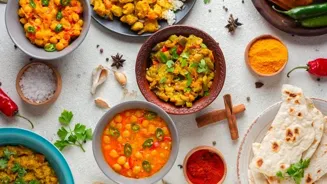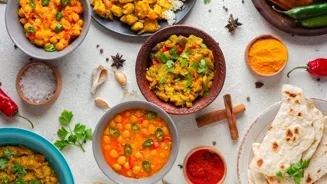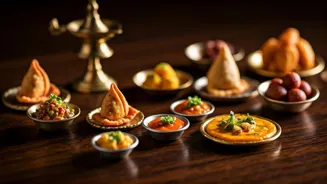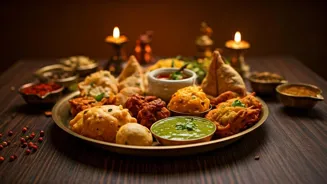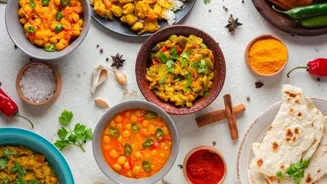Unveiling the Mysteries of Indian Street Food! Delve into 7 Cultural Insights Unveiling the Secrets!
From the bustling lanes of Delhi to the vibrant beaches of Mumbai, Indian street food tantalizes taste
buds with an explosion of flavors. But beyond the delectable taste, each savory bite holds a fascinating story, deeply intertwined with the rich tapestry of Indian culture.
These insights are not just about the ingredients or cooking methods; they unveil how street food reflects societal values, historical influences, and regional identities.
Ever wondered why certain snacks are more popular in specific regions or why vendors often have elaborate family histories connected to their trade?
Prepare for a journey beyond the spice, as we dish out seven intriguing cultural insights into the world of Indian street food that you probably didn't know!
Street food embodies community spirit, fostering inclusivity and shared experiences
The significance of street food extends beyond mere sustenance; it's a vibrant expression of community and shared experiences. The ubiquitous presence of vendors in public spaces fosters social interaction, creating informal gathering spots where people from all walks of life converge.
Sharing a plate of pani puri or samosas transcends social barriers, fostering a sense of camaraderie and belonging. This accessibility is essential in a nation as diverse as India, where street food vendors become integral parts of the local ecosystem.
Furthermore, the affordability of these culinary delights makes them a staple for many, reinforcing their role a democratic culinary experience, accessible to all social classes.
Regional street food reflects local history, geography, and resources; ingredients and techniques vary
Regional variations in street food are not just about different ingredients; they are reflections of local history, geography and available resources.
For instance, the use of specific spices, like asafoetida, or hing, in some North Indian chaats stems from its historical use in traditional Ayurvedic medicine, believed to aid digestion.
Conversely, the abundance of coconut in South Indian snacks can be attributed to its cultivation along the coastal regions of the country. Even cooking techniques vary, with some regions favoring clay ovens, or tandoors, while others rely on simple griddles or pans.
These regional specialties are not mere culinary quirks; they are living testaments to the ingenuity and adaptability of local communities.
Street food vendors pass down recipes & skills, preserving culinary heritage & livelihood
Street food vending is often a multi-generational family trade, with recipes and skills passed down through countless years. These families are not just vendors; they are custodians of culinary heritage, preserving traditional flavors and cooking methods that might otherwise be lost.
For many families, street food vending constitutes the livelihood, helping them provide for their wellbeing. The recipes and skills are transferred to the younger members carefully.
This tradition contributes to the continuity of culinary traditions but also fosters a strong sense of pride and identity within families. Their dedication to their trade often translates into exceptional quality and authenticity.
Street food rituals in India reflect cultural and spiritual values
The ritualistic practices associated with street food preparation and service highlight the cultural significance of food in India. Many vendors begin their day with a quick prayer, seeking blessings for a successful business.
Others observe specific dietary restrictions or fast on certain days of the week, reflecting their religious beliefs. The act of offering food itself is often seen as an act of selfless service, or 'seva,' particularly when vendors provide free food to the poor or needy.
These practices go beyond mere hygiene concerns; they imbue the act of preparing and serving street food with a deeper meaning, connecting it to spiritual values and cultural traditions.
Street food presentation elevates sensory experience, highlighting artisanal pride
The presentation of street food is often as important as its taste, with vendors taking immense pride in creating visually appealing dishes. Elaborate garnishes, vibrant colors and artistic plating are all hallmarks of Indian street food culture.
The use of traditional serving vessels, like leaf bowls or terracotta plates, adds to the aesthetic experience.
The overall presentation is not just about making the food look attractive; it's about showcasing the vendor's creativity and attention to detail, enhancing the customer's overall sensory experience.
This emphasis on visual appeal distinguishes street food from mass-produced alternatives, highlighting its artisanal nature.
Street food in India boosts economy, supports vendors, and attracts tourists
The economic importance of street food vending in India is undeniable, providing employment and income to millions across the country. It serves as a crucial entry point into the workforce, particularly for those with limited education or resources.
Street food vendors often contribute significantly to the local economy, supporting a network of suppliers, farmers, and traders. A thriving street food scene can also boost tourism, attracting visitors eager to experience the diverse culinary delights that India has to offer.
Recognizing the significant economic impact, government initiatives are often introduced to support street food vendors, promoting hygiene, and improving infrastructure.
AI Generated Content. Glance/InMobi shall have no liability for the content

